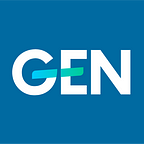Elvis: visualising public spending and investigating corruption
Elvis allows journalists to visualise and investigate public spending. Elvis was part of the 16 semi-finalist of our Startups for News competition. We asked the team a few questions about their startup.
What did you do prior to launching Elvis?
Adriana, co-founder, is a data journalist, and Victor, the other co-founder, is a freelance coder for newsrooms.
What problem are you trying to address for newsrooms?
Open data is everywhere, but not every journalist is a skilled data analyst. By creating tools, we help newsrooms find leads and support for stories in the data. Our focus lies on public spending, specifically tender data.
Public procurement (or tendering) is the process of acquiring goods and services for the government. It is therefore the most prominent flow of public money into the private sector. However, structured journalistic research into tenders is limited. Only incidental cases make it to the media and these are often facilitated by whistle-blowers. We want to spread the notion that it is important for the government to be open about how it spends the money that we entrust in its metaphorical hands.
How are you attempting to solve the problems described above?
Journalists can use Elvis to visualise public spending in a specific EU country, sector, and year range. It allows journalists to reveal suspicious relationships between government and companies and visually answer questions like ‘Who is dominating the IT market in the Netherlands?’ or ‘Which companies earn most money from public spending in Slovakia?’.
Let’s dive into more detail: with Elvis, journalists can visualise public spending data as graphs or networks of financial relations. They can visualise parts of the public sector of a country — such as IT or healthcare — or draw an entity network.
Governments and companies are visualised as a network of blue and red ‘dots’. Each connection between a government (red) and a company (blue) dot in the network is a tender — or the amount of money they exchanged. The thickness of this connection, as well as the size of the dot, can represent how much public money was awarded or how many tenders were awarded.
Are there any clusters? Are there companies dominating the market?
The network visualisation is accompanied by a sidebar and a detailed view. Here, the journalist can find a list of all the companies and governments in the network, sort them by value, search for a specific entity, or click through to other platforms such as TED (Tenders Electronic daily) and the opentender.eu dashboard.
We are also experimenting with adding red flags of corruption to the network, flagging companies, governments and tenders that might be involved. The two flags we have implemented until now either show low competition — whether the company comes from same city as the government institution — or whether it is registered in a tax haven. Whether these red flags indicate corruption however depends heavily on the sector and the country the journalist is looking at.
Given the data is filled in manually by public officials, all tender data is very inconsistent. Bulk analysis of the data can be therefore quite challenging. It so often happens that the same company shows up with different spelling leading to multiple dots instead of one. We have therefore implemented a simple tool to merge these into one.
What sets you apart from your competitors? List three elements.
We have no competition. But compared to other dashboards we have seen with similar data, Elvis is very straightforward. We primarily focus on the network view and a simple sidebar. We don’t want the tool to become an overwhelming dashboard. Also, Elvis is fun! We offer wiggly visualisations and pictures of fruit.
What is your business model?
We aim to sell our expertise on tender data beyond what Elvis does, by creating custom analysis for newsrooms, as well as adapting Elvis as a network visualisation platform for different data for interested newsrooms.
What are your next steps?
Elvis is not finished yet, so there are still quite a few steps to take when it comes to optimisation. We want to make the user experience better, mainly in terms of speed. Our graph database contains 7 million tenders and is therefore often too slow. We would also like to add more red flags of corruption. We are also curious to find out what journalists would like to find on Elvis!
